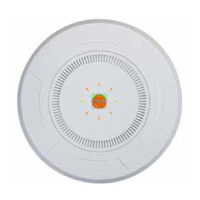Wireless Access Point
Configuring the Wireless AP 269
BSS. A group of BSSs can be formed to allow stations in one BSS to communicate
to stations in another BSS via a backbone that interconnects each access point.
The Extended Service Set (ESS) refers to the group of BSSIDs that are grouped
together to form one ESS. The ESSID (often referred to as SSID or “wireless
network name”) identifies the Extended Service Set. Clients must associate to a
single ESS at any given time. Clients ignore traffic from other Extended Service
Sets that do not have the same SSID.
Legacy access points typically support one SSID per access point. Wireless APs
support the ability to define and use multiple SSIDs simultaneously.
Using SSIDs
The creation of different wireless network names allows system administrators to
separate types of users with different requirements. The following policies can be
tied to an SSID:
The wireless security mode needed to join this SSID.
The wireless Quality of Service (QoS) desired for this SSID.
The wired VLAN associated with this SSID.
As an example, one SSID named accounting might require the highest level of
security, while another named guests might have low security requirements.
Another example may define an SSID named voice that supports voice over
Wireless LAN phones with the highest Quality of Service (QoS) definition. This
SSID might also forward traffic to specific VLANs on the wired network.
See Also
SSID Management
SSIDs
Understanding SSIDs

